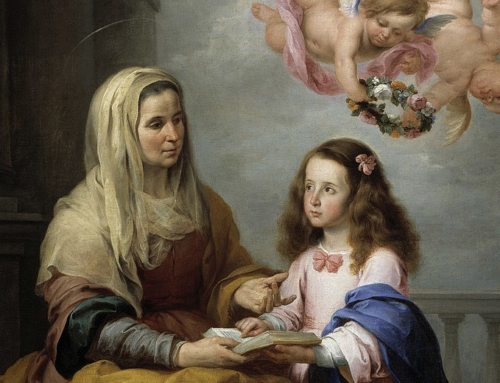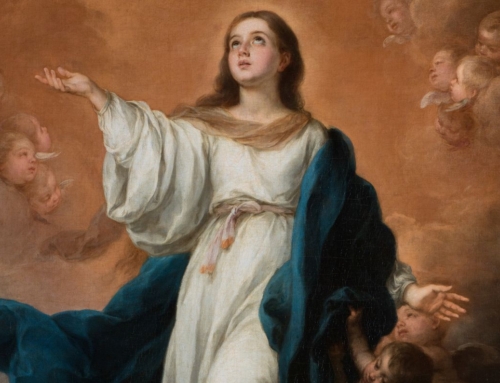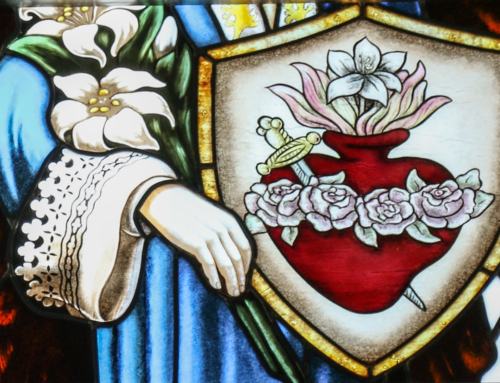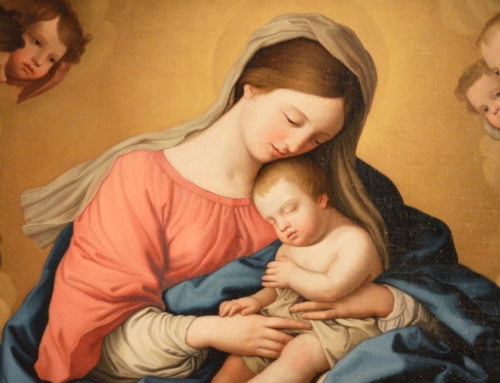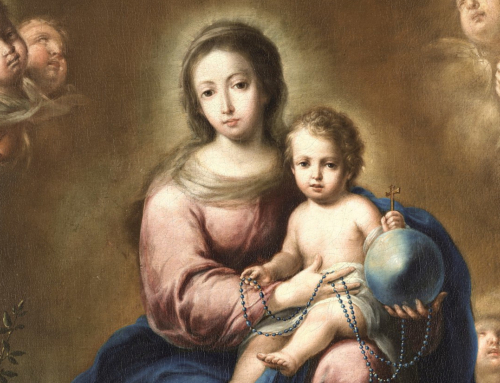The Sights and Sounds of Christmas:
“Lo, How a Rose E’er Blooming”
All was quiet and still with that quiet stillness that slows one’s step almost without him noticing. Beneath the dark boughs of the forest, the crisp flakes of the newly fallen snow caught and crystalised the silver moonlight. Brother Laurentius, wandering through this melancholic solemnity, observed amid the encircling white and diamond a deep ruby warmth. Stooping, the Cathusian lifted the blooming rose to a silver shaft of light. How strange to find such a flower nestled amid the Christmas snowfall. Still contemplating the blossom, the monk trudged back to the convent. Finding a crystal vase, he placed the rose beneath the gentle candlelight of Mary’s altar.
Brother Laurentius’s midnight discovery, according to tradition, inspired the meditative Advent and Christmastide hymn, “Lo, How a Rose E’er Blooming” (“Es ist ein Ros entsprungen”).
From the beginning, “Lo, How a Rose” was a sort of gentle call to a Marian contemplation. The Church had long seen the Blessed Virgin prefigured in the words of the Song of Songs: “I am a rose of Sharon, a lily of the valleys” (Song 2:1). The first version, which appeared in a German hymnal in 1599, sang of Mary as the rose that “has brought forth a floweret,” Christ. The verse captures the mystique of Mary’s role in the Incarnation of the Son of God. The perfect flower of her holiness provided the fitting stem upon which to form the humanity of the perfect man. Like Br. Laurentius gazing on the color of the rose amid the darkness of night, the listener contemplates the sinless beauty of the Virgin Mother of God amid the pallor of fallen world.
The current version of the hymn, with the powerful harmonies composed by Michael Praetorius in 1609, focuses more on that floweret, Christ:
This Flow’r, whose fragrance tender
With sweetness fills the air,
Dispels with glorious splendor
The darkness everywhere.
We now see Christ as the rose fulfilling Isaiah’s prophecy: “There shall come forth a shoot from the stump of Jesse, and a branch shall grow out of his roots” (Isa 11:1). The grace and truth of the Christ child, like the sweet fragrance of a rose, permeates the rotten decay of our fallen world and makes all things fresh. The gentle light of the newborn king’s face, like the red rose in the field of white, shines out a glorious splendor that will blaze forth on the Mountain of the Transfiguration, obliterate the darkness of the grave in the light of the Resurrection, and flow to every corner of the earth through the faces of his friends who have seen this light.
In this focus on Christ the rose, the hymn retains its Marian aspect. Now, we join the Virgin Mother in her undiluted contemplation of her Son. The goal of the hymn, the purpose, is to join our eyes to those of Mary gazing upon this “flow’ret bright”: “With Mary we behold it.”
Mary is the contemplative par excellence. In her maternal care, we hear several times how she pondered in her heart the mystery of her divine Son (cf. Lk 1:29; 2:18, 51). When we pray the Rosary, we join in Mary’s contemplation, gazing with her into the inexhaustible mystery of her Son.
“Lo, How a Rose” invites us to a similar contemplation. We wonder at “How Christ, the Lord of Glory, / Was born on earth this night.” With Mary we ponder the baby in the crib, knowing that he is “True man, yet very God” and that “From sin and death He saves us.”
Praetorius’s musical arrangement aids this contemplation. The lyrics move slowly and gently through the harmonies, beckoning to us to slow down, to listen, to behold. The chords rise and fall, grow and subside with all the intensity and subtlety of contemplation, one moment powerful, the next moment gentle, yet always moving with a heavenly steadiness.
In this Christmas contemplation, we see ever more clearly what Mary saw and what her motherhood shows:
To show God’s love aright,
She bore to men a Savior,
When half spent was the night.
Christ the flower came breathing forth the fragrance of divine love. He sprung from Mary’s “tender stem” to reveal the love of God, to manifest in visible form the heights and depths of God’s love. “To show God’s love aright,” God’s only Son became the Son of Man, born our brother through Mary, that we might be born his brothers through grace, becoming sons of God.
With Mary, then, we behold afresh the flowering of grace and new life in the Christ Child.
✠
Photo by Goran Horvat on Pixabay


